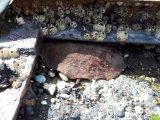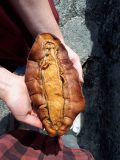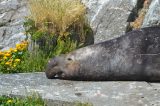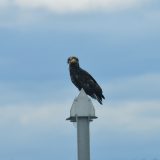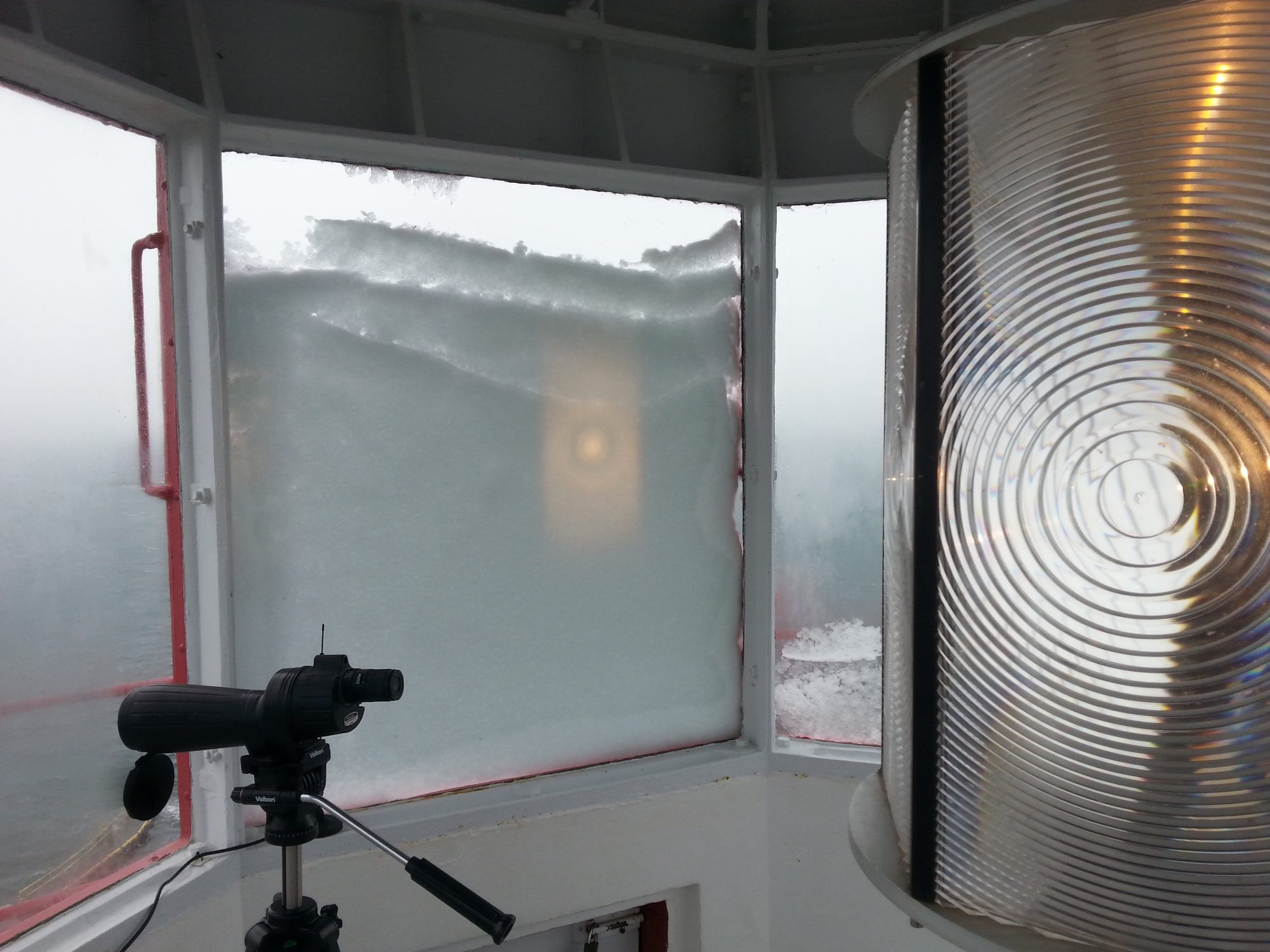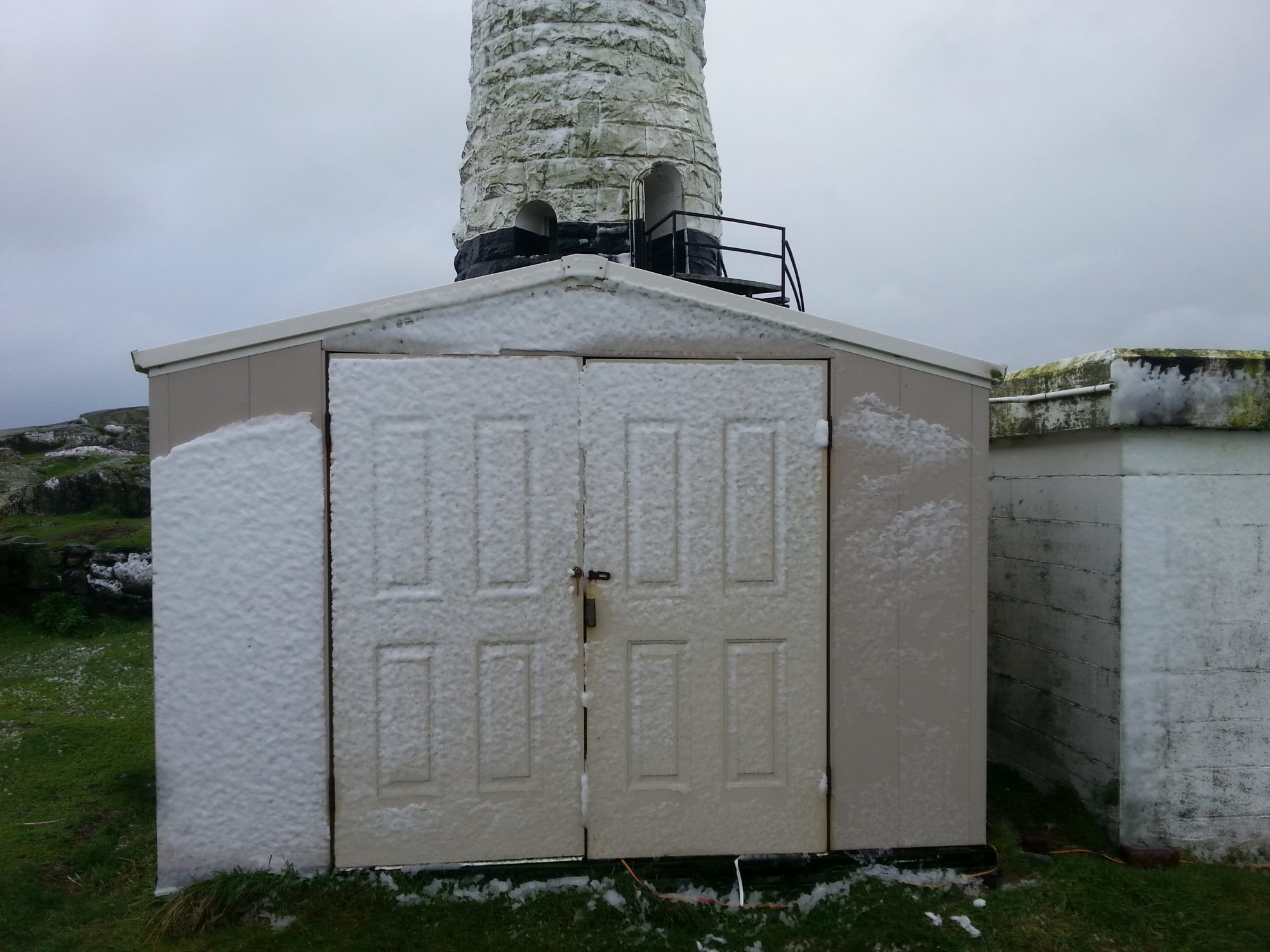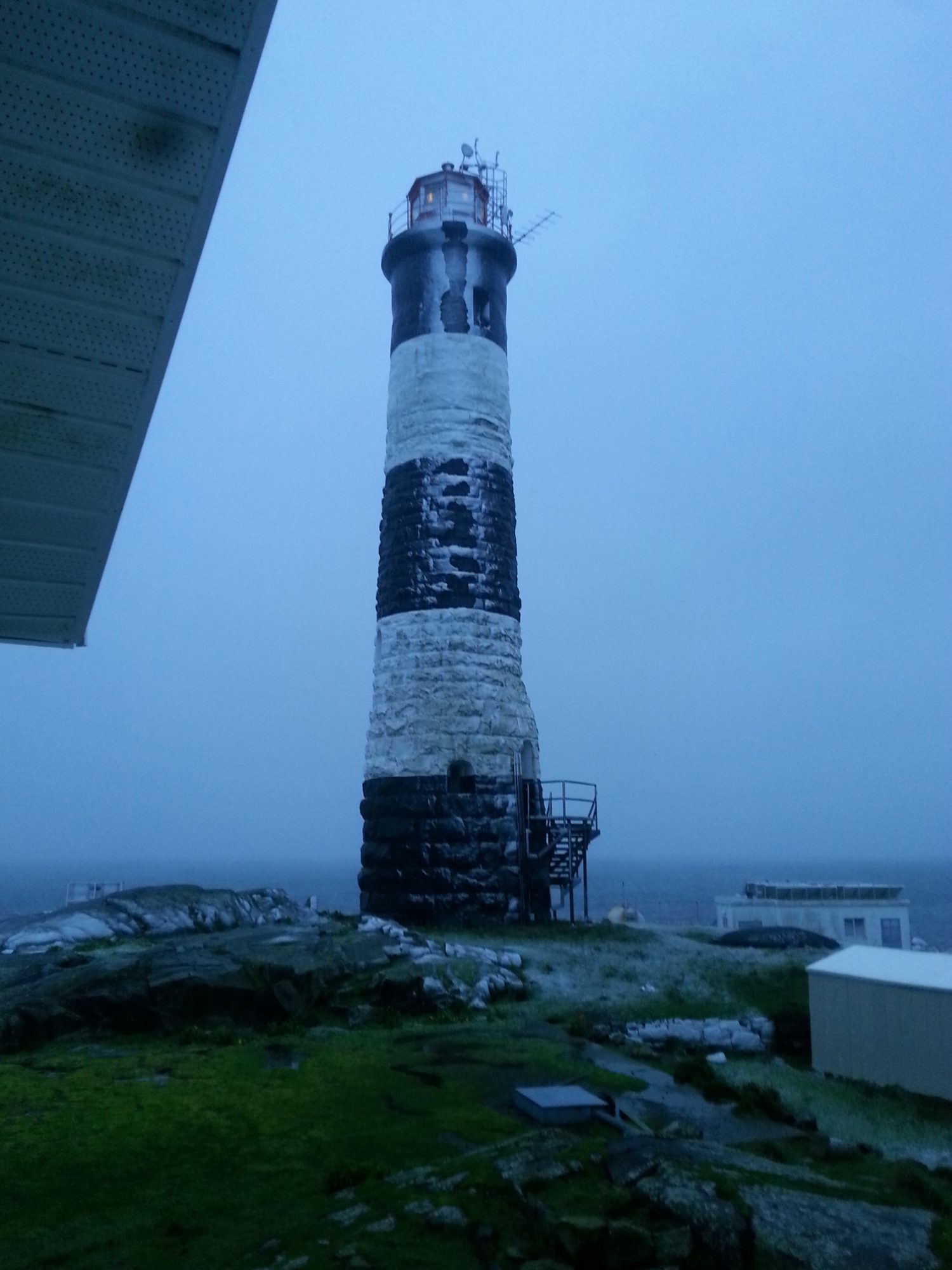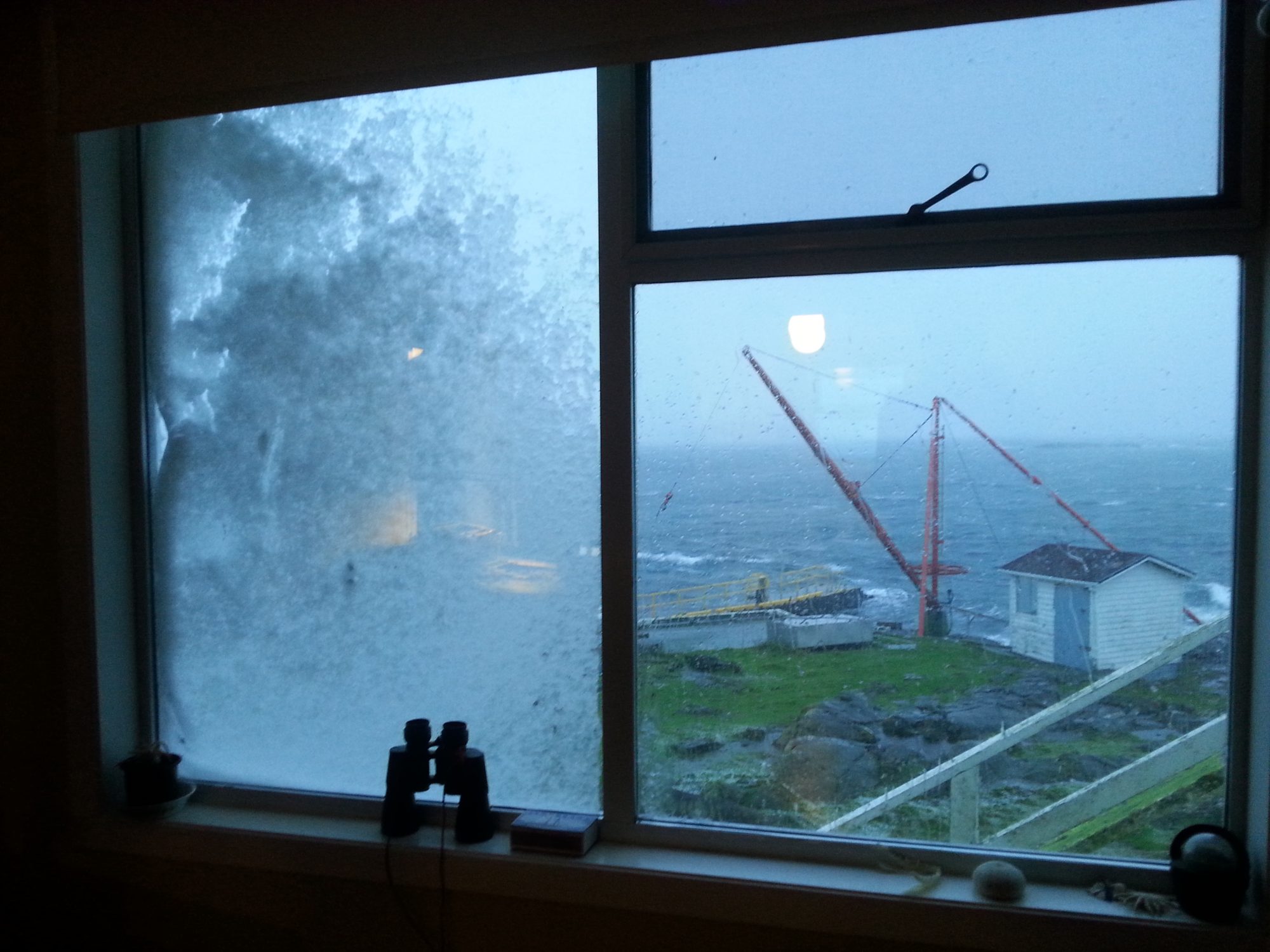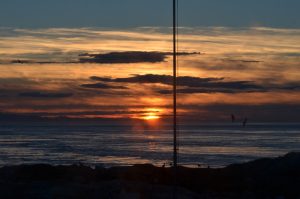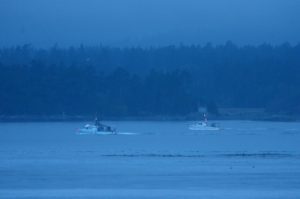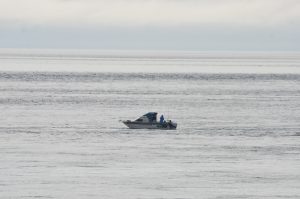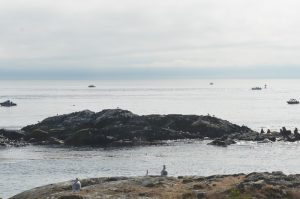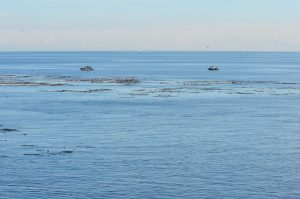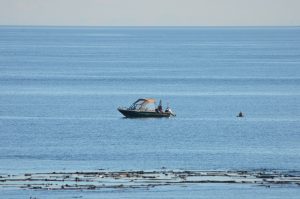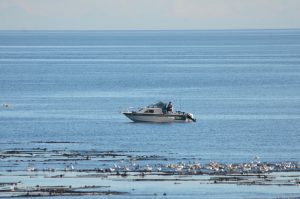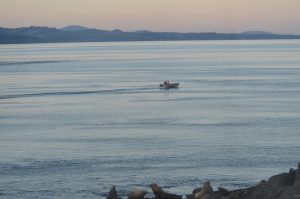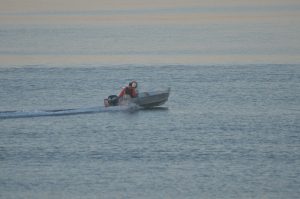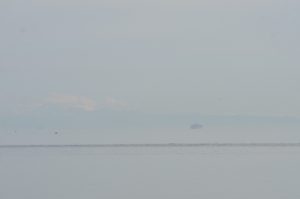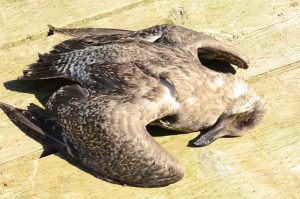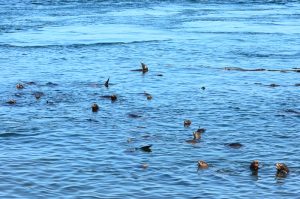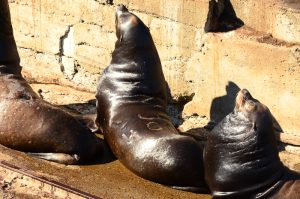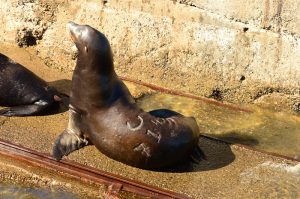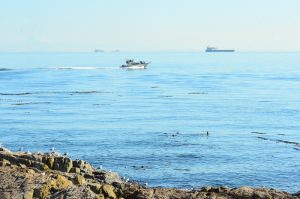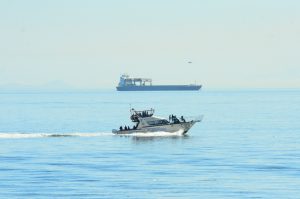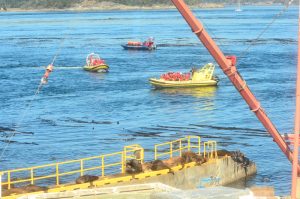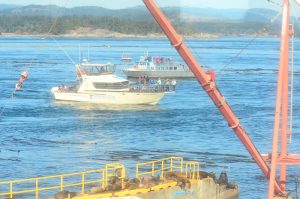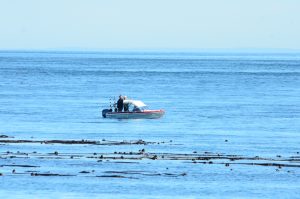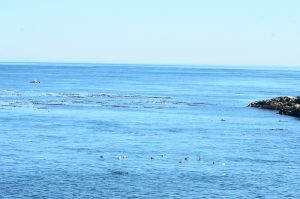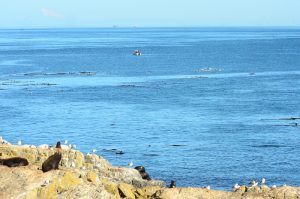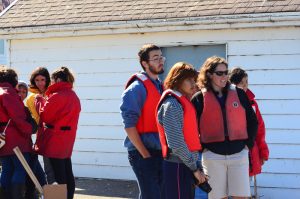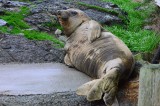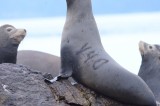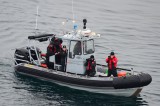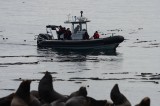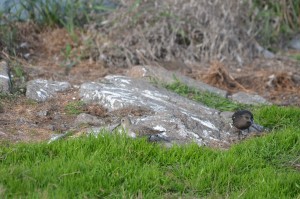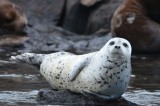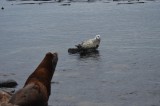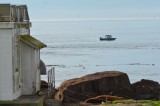This blog covers three days, September 15, 16 and 17th; Thursday, Friday and Saturday. It will be replaced by a point form log for the rest of the stay.
Weather and Sea Conditions
Thursday was part of the last high pressure system with sunny afternoon westerlies of 10 – 15 knots. Friday was a transition day with heavy fog burning off by early afternoon and accompanied by westerlies of up to 25 knots. By dusk it had clouded over and showers continued overnight and into Saturday morning. This wet weather came with winds from the north. Morning fog patches continued Saturday and by early afternoon the wind switched from 10 – 15 knots north, to 25 -30 knots west partially cleared with sun between showers. The marine forecast for Central Juan de Fuca Strait includes a strong westerly wind warning. The wind is predicted to drop to westerly 10 to 15 early Sunday morning and showers are expected to end near midnight Saturday.
It appears that the Race Rocks Ecological Reserve weather station has not been operating since mid-June, so longer-term context is not possible other than anecdotal information recorded in recent logs.
Vessels in Ecological Reserve
Commercial whale-watching activity inside the Ecological Reserve boundaries is busy, with 20 commercial visits noted on the 16th and 14 visits on the 17th. The guidelines for vessel activity are not being observed by all operators and some of the commercial vessels are as close as 5 meters from the sea lions (and shore). Some very large vessels are going through shallow passages, making erratic turns in the current, travelling against the current and several vessels were seen speeding (> 7 knots within 400 m of Great Race). No other commercial activity was observed. Although several recreational vessels were seen passing through, there was no sports-fishing activity noted within the closed area.
Ecology
Seasonal shifts are apparent with the return of some ‘winter’ species and visits by fall migrants. There are only seven Glaucous-winged Gull chicks left on Great Race Island that are not fully fledged. The smallest, chick has a badly injured left leg. One other still has pinfeathers on its head and the rest are close to flying. There are notably fewer gull chick remains on the island this year perhaps indicating a lower mortality rate. There does not appear to be any data on the number of nests or their productivity this year so it may just reflect lower productivity. The logged death of the old River Otter may be related to the drop in chick carcass numbers.
Glaucous-winged Gulls are still the dominant gull species here on Great Race. California Gulls are abundant in the area but not roosting on Great Race yet. There are large (>1,000 birds), mixed species, feeding flocks adjacent to the Ecological Reserve in Race Passage and in the distance. California Gulls have been seen resting on thick mats of Bull Kelp in Middle Channel.
Black Turnstones and Surfbirds have returned from the Arctic where they nest in the summer. One Ruddy Turnstone was noted today feeding on flies, fuel for a migration that may extend as far south as South America. A single Sanderling was noted both Friday and Saturday and this is another species that nests in the Arctic and is widespread in the ‘winter’. Black Oystercatchers, which are much more site fidel, are roosting near the energy building in the evenings. At least one Kildeer was heard each evening just after dark.
Both Stellers (Northern) and California Sea Lions are moulting this time of year and are hauling out on Great Race, South Seal and South Islands as well as Middle Rocks and Turbine Rock. Photos were taken and processed, of branded, tagged and entangled sea lions.
Northern Elephant Seals are hauling on both Middle and Great Race and a total of six were noted Saturday. No big males. Harbour Seals are abundant and using these haul-out areas; West, Middle, Turbine, North and South Seal Rocks and South Islands.
A single Sea Otter was observed in the kelp just south of North Rocks Saturday morning.
One Humpback Whale was noted feeding near the Ecological Reserve.
Sustainability
Solar panels are maintaining power for the island in spite of intermittent cloud and showers. Without the weather station operational, sunlight levels are not being measured. The diesel generator is run for a couple of hours each evening to top up the batteries for the night.
Visitors
Kyle brought three visitors yesterday, two from Ocean Networks Canada and one from Fisheries, Oceans and the Canadian Coast Guard, for a site visit.
Maintenance and Operations
Regular chores included the 06:15 daily weather report for Pedder Bay Marina, daily solar panel maintenance, walkway cleaning, repairing and electrifying fences. The outside of the fuel barrel (eco-four) house was scrubbed, tops of fuel barrels stored outside were drained of water, and windows in the energy building were washed. The “science” house was inspected, an open window closed in the basement, exterior electrical box was noted broken from wall and conduit open at bottom (photo). Science house furnace was full on and the upstairs temperature was 22.0o C. Thermostat turned down. It was noted that diesel had been spilled in basement. Spill pads on the fuel drum are saturated and there was diesel on the entry bootscrubber/doormat. Looked at derrick dock woodpile and noted creosoted and pressure treated wood in woodpile, probably a health hazard to burn. Inspected chainsaw chain…just needs filing. Took VHF, charger and manual to top of tower to replace the one missing from there. Wheelbarrows were deployed for rainwater catchment. The conductivity meter’s line was marked with yellow electrical tape so that seawater sampling could be done at measured depth. In the energy building an attempt was made to align the indicator lights on the three Xantrax controllers with the holes. Two out of three can now be seen and the middle one can be seen plainly with the lights out. The flashing rate of these lights indicate the controller’s stage of operation and approximate battery voltage which is helpful to knowing how long to run the generator. Weather station troubleshooting will continue tomorrow.
-
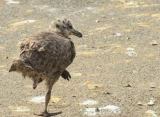
-
Slow developer has injured leg.
-
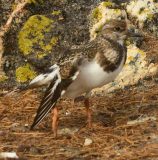
-
Ruddy Turnstone stretches its wing on its way from the arctic southward.
-
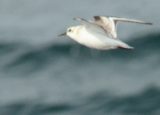
-
Sanderling takes refuge on Race Rocks.
-
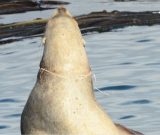
-
Necklaced Northern Sea Lion.
-
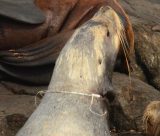
-
Packing strapping can be seen unravelling.
-
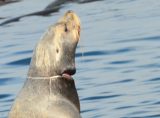
-
Strapping is only cutting in on the ventral side.
-
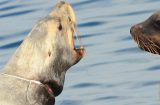
-
Strapping doesn’t keep him from making noise and interacting.

